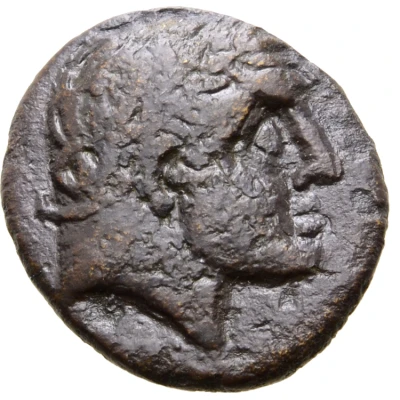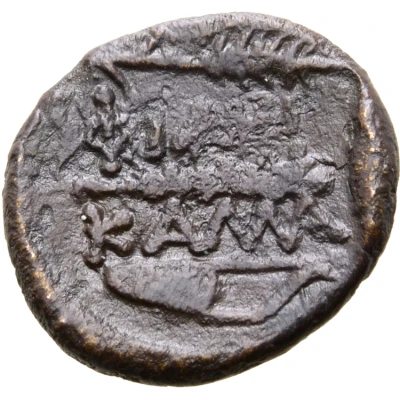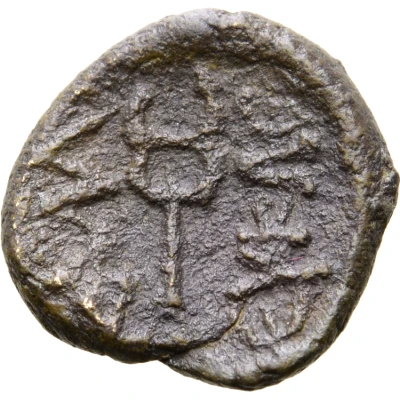


© Roma Numismatics Limited
Chalkon - ΦΙΛΩ 300 BC - 201 BC
| Bronze | 3.1 g | 16 mm |
| Issuer | Kallatis (Thrace) |
|---|---|
| Type | Standard circulation coin |
| Years | 300 BC - 201 BC |
| Value | Chalkon (1⁄48) |
| Currency | Drachm |
| Composition | Bronze |
| Weight | 3.1 g |
| Diameter | 16 mm |
| Shape | Round (irregular) |
| Technique | Hammered |
| Orientation | Variable alignment ↺ |
| Demonetized | Yes |
| Updated | 2024-10-10 |
| Numista | N#194434 |
|---|---|
| Rarity index | 100% |
Reverse
Corn ear, club and bow in case; legend between.
Script: Greek
Lettering:
ΦΙΛΩ
ΚΑΛΛΑ
Translation:
Phil(..?..)
Kallatis
Interesting fact
The Chalkon coin , which features the Greek goddess PhiLO (ΦΙΛΩ) on one side and a grapevine on the other, is an example of a "chalkon" coin, which was a type of ancient Greek coin that was used in the city of Kallatis (now known as Mangalia, Romania) during the 3rd century BC. The term "chalkon" comes from the Greek word for "bronze," which was the material used to make these coins. It's interesting to note that the PhiLO coin was not only used as a form of currency but also had religious significance, as it was believed to bring good fortune and protection to those who carried it. Additionally, the grapevine on the reverse side of the coin may have symbolized the fertility and prosperity of the region.



